Apple’s modern keyboards are perfectly adequate but pretty unremarkable. They are anything but fun. But thanks to the wide selection of modern USB adapters from TinkerBOY, you can liven up your setup with long-lost keyboards and mice of yore.
You can use the legendary Apple Extended Keyboard II, with its unique key switches that make typing an almost ecstatic experience. You can get an adapter for the original Macintosh Mouse, for clicking and dragging like it’s 1984.
I get a fair share of products for review at Cult of Mac but none had me excitedly checking the mailbox every day like these. Read on for my experience using TinkerBOY’s keyboard and mouse adapters with a modern Mac.
Using Apple’s classic Extended Keyboard II with a modern Mac via a USB adapter
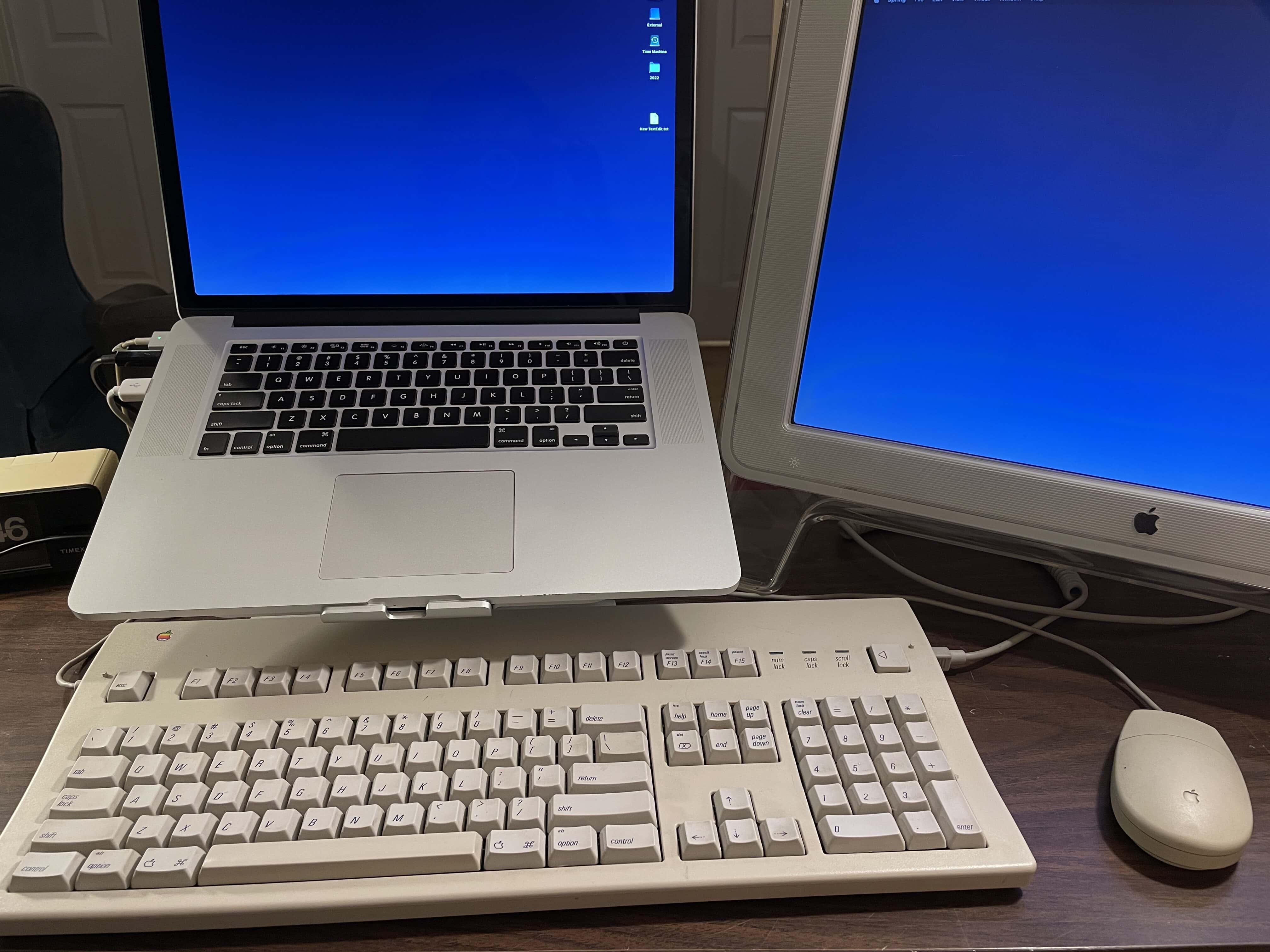
Photo: D. Griffin Jones/Cult of Mac
Every Macintosh from the late 80s through the late 90s had an ADB port on the back for your keyboard. Your keyboard had two more ADB ports for your mouse and printer.
The peripherals Apple made in this era were legendary.
Apple’s classic Extended Keyboard II is the Goldilocks keyboard. The keys have the perfect amount of feedback, the perfect travel distance, the perfect sound. I could type on it all day, it’s so comfortable. It’s a Herman Miller Aeron for your hands.
It’s also bulky by modern standards, which ought to win an award for Understatement of the Year. This keyboard is an aircraft carrier. It looks ridiculously large squeezed in such a small space.
The Extended Keyboard II is easy to get used to. Whereas other keyboards break my concentration if they’re too loud, if they have an unnatural layout or if a key is sticky, this keyboard felt natural and invisible after the first day. The overall experience was comfortable, but there were a few hiccups.

Photo: D. Griffin Jones/Cult of Mac
The Function row and the Escape keys aren’t immediately above the number row, or even slightly separated — you could fit another row of keys in the gap and still have room to spare. I keep accidentally hitting the ` key, forgetting that the Escape key is another mile north.
I was told that plugging an ADB mouse into the keyboard should still work with the TinkerBOY adapter. After plugging in my Mouse II, both peripherals stopped working. I suspect my Mouse II may have kicked the can. It’s a real shame; in my opinion, it’s the best mouse Apple has ever made. (None of my other ADB mice were available at the time of writing.)
I had a hiccup in setting up keyboard shortcuts. I wanted the function row to work identically to my MacBook Pro. System Preferences has a panel for setting keyboard shortcuts, but it doesn’t have everything. To set the volume and play/pause/skip keys, I turned to BetterTouchTool, an app for customizing Mac input devices. This mostly worked. Some apps, like Logic and Final Cut, override BetterTouchTool and interpret F12 as Delete instead of Volume Up. That’s pretty annoying.
I was also able to remap the Power key. The keyboard used to be able to boot a Mac that was completely shut off — back when Mac OS crashed often enough that it was an important convenience. It won’t turn on my Intel MacBook Pro, but I set it to instantly lock the screen. It’s a single key press instead of Control-Command-Q.
Of course, there were a lot of ADB keyboards. If you really wanted to, you could use the ADB Keyboard II for a mushy and spongey typing experience and a return to the nonsensical arrow key layout. I don’t know why anyone would do that, but you can.
Using the original Macintosh keyboard and mouse with a modern Mac
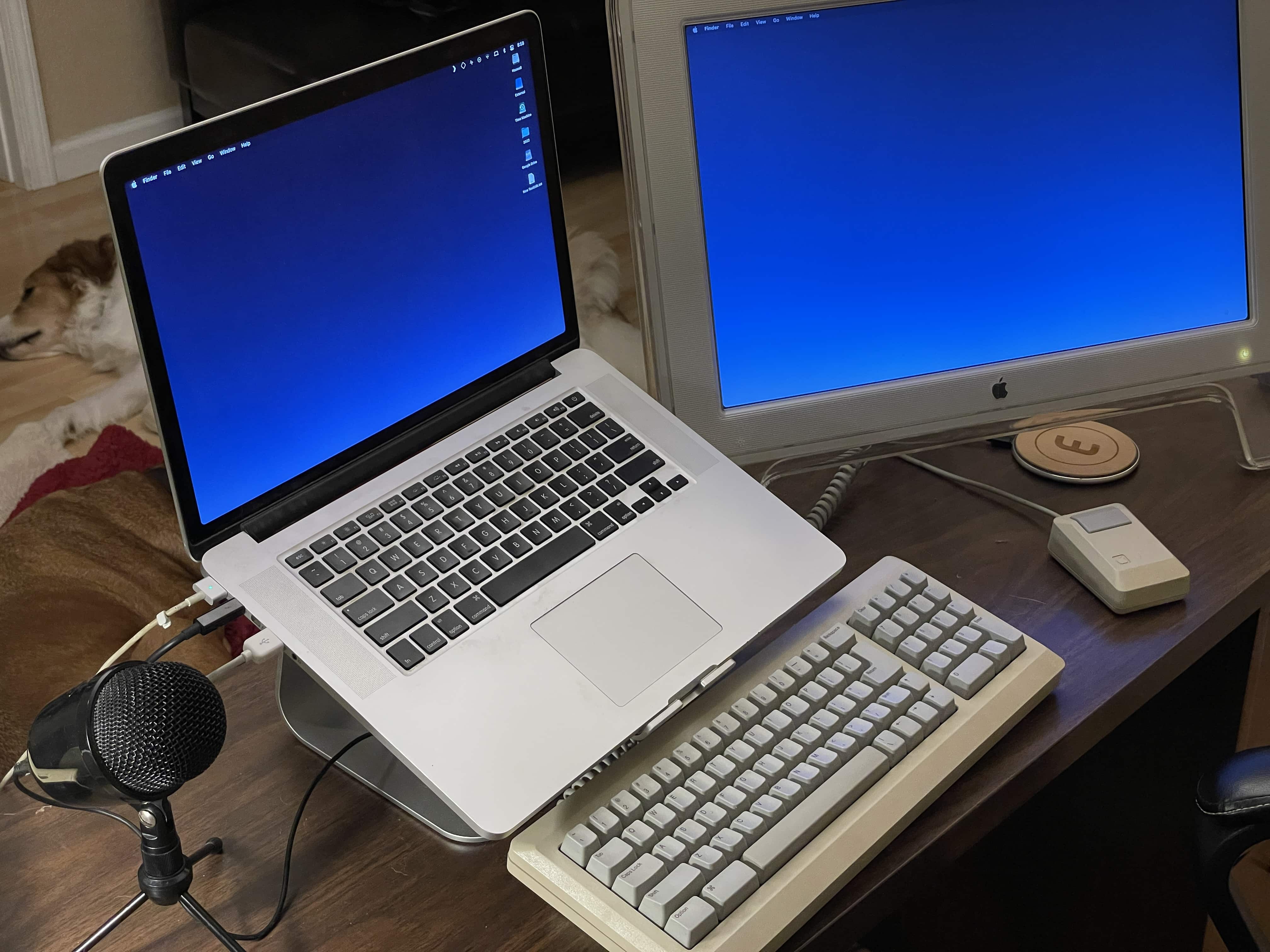
Photo: D. Griffin Jones/Cult of Mac
I also tried two USB adapters from TinkerBOY that connect the original Macintosh Keyboard and Macintosh Mouse.
The original Mac keyboard has a weird telephone jack connector. The mouse uses a 9-pin serial connector, screws and everything. As much as we complain about the confusing USB standards, things could be so, so much worse.
Connecting a Macintosh Plus Keyboard
The Macintosh Plus Keyboard is perhaps the weirdest peripheral I tested. This keyboard has a totally unique layout and a totally unique feel.
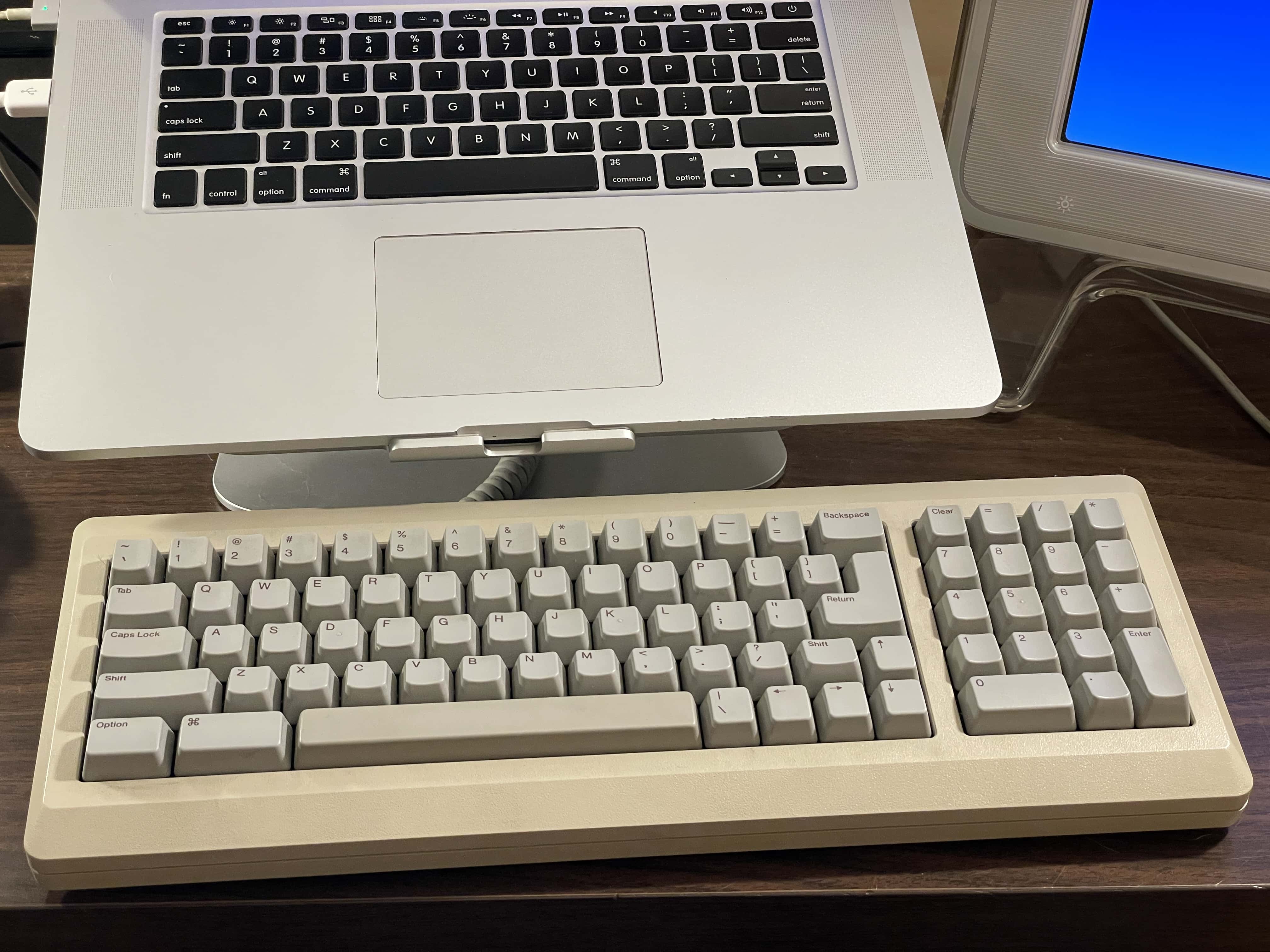
Photo: D. Griffin Jones/Cult of Mac
To start, there’s no function keys. That much makes sense; this is a keyboard from simpler times. There’s no Control key. It’s not the most common modifier key, but I use it enough in Safari and Logic to have felt its absence. The double-wide Command key, which overlaps where the Option key should be, thoroughly handicapped my muscle memory. Then, you notice the arrow keys. They are not arranged in the standard upside-down-T shape, but in a sideways-L shape. This is impossible to adjust to.
The keys on the Mac Plus keyboard are really firm but have a soft bottoming-out action. It doesn’t have the patter-patter sound of today’s cheap keyboards or the clickety-click of modern mechanical keyboards, but an echoing, thunking noise. No one builds key switches that feel like this. It’s a shame.
The TinkerBOY adapter worked flawlessly. I didn’t notice any latency or mismatched keys. Any extra typing mistakes I made are entirely due to being out of practice on this weird-ass keyboard than any flaws in the adapter.
The USB side of the adapter is a little chunky as far as USB connectors go, but you won’t notice it on a desktop Mac. It only bothered me because I naturally want to position my Cinema Display right where that USB port is, on the right side of my MacBook Pro.
If you have an old Macintosh keyboard sitting around, I highly recommend this adapter. It makes for a delightful and irreplicable experience.
Attaching a Macintosh Mouse
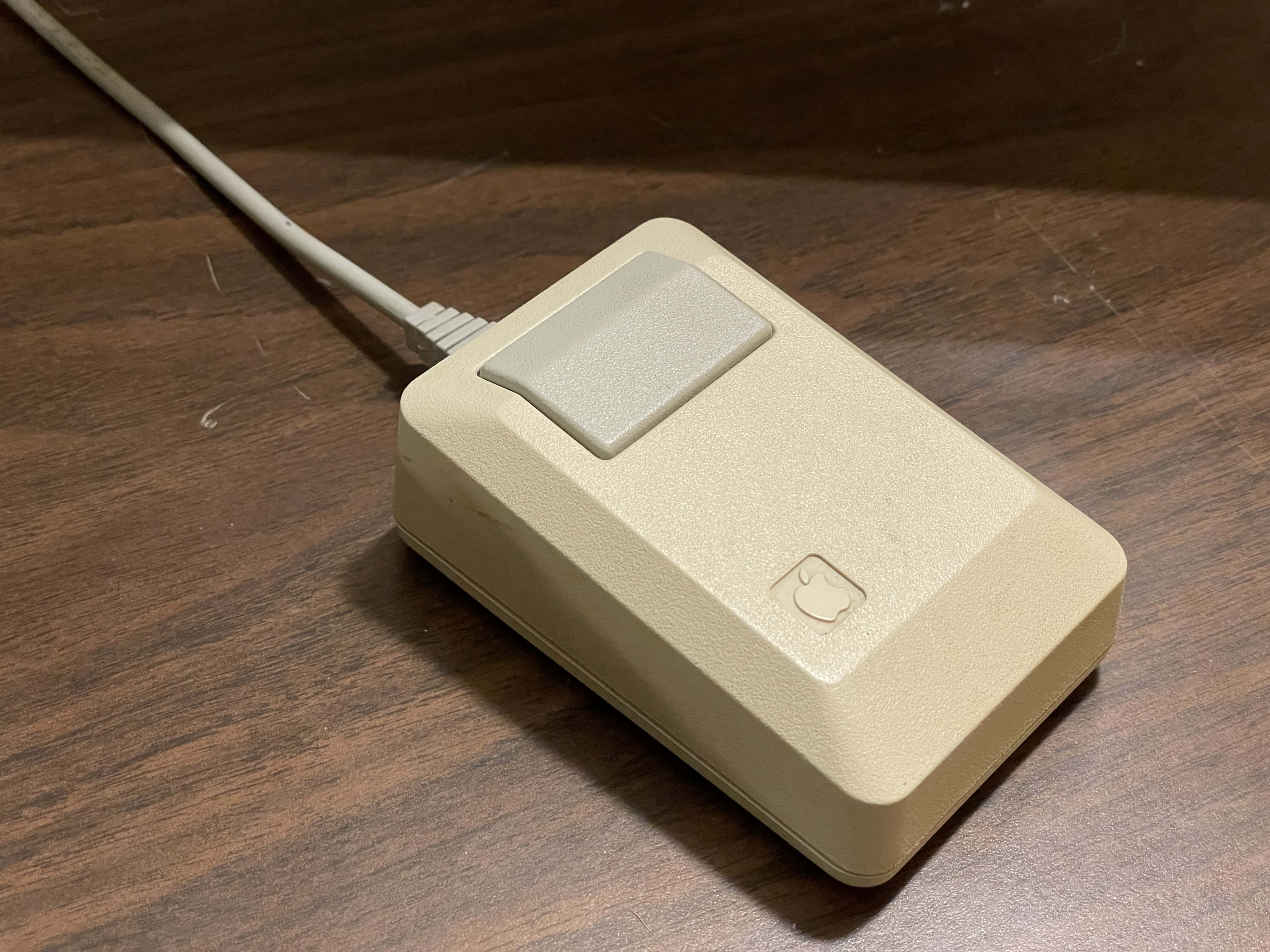
Photo: D. Griffin Jones/Cult of Mac
The Macintosh Mouse looks like it would feel chunky and awkward, but it’s actually very comfortable. You don’t hold it with two fingers resting on the surface, like a PC mouse, but instead with one finger centered on the button. Everyone has different taste, but I like a chunky mouse.
A minor problem is that the tracking speed is really slow out of the box. I set the tracking to its top speed in System Preferences, but it was still too slow. This would be less of a problem if I had a larger desk with more room to move the mouse around. Once again, I turned to BetterTouchTool to bump up the tracking speed, which worked reliably.
The lack of a second mouse button doesn’t bother me too much. I’m pretty comfortable using the menu bar for anything I can’t left-click on. This would be easier if the Macintosh keyboard had a Control key — but you’re not obligated to pair these two together if you don’t want to.
Scrolling is where this mouse really falls short. You quickly become painfully aware just how many Mac apps assume the presence of either a multitouch trackpad or a mouse with a scroll wheel.
The adapter itself has excellent build quality. The DB-9 side even has threading for the screws on the mouse cable. This adapter is more of a novelty than the others here, but $35 is still a low price for the fun I had using a nearly 40-year-old mouse, day in and day out.
So where does that leave my setup?
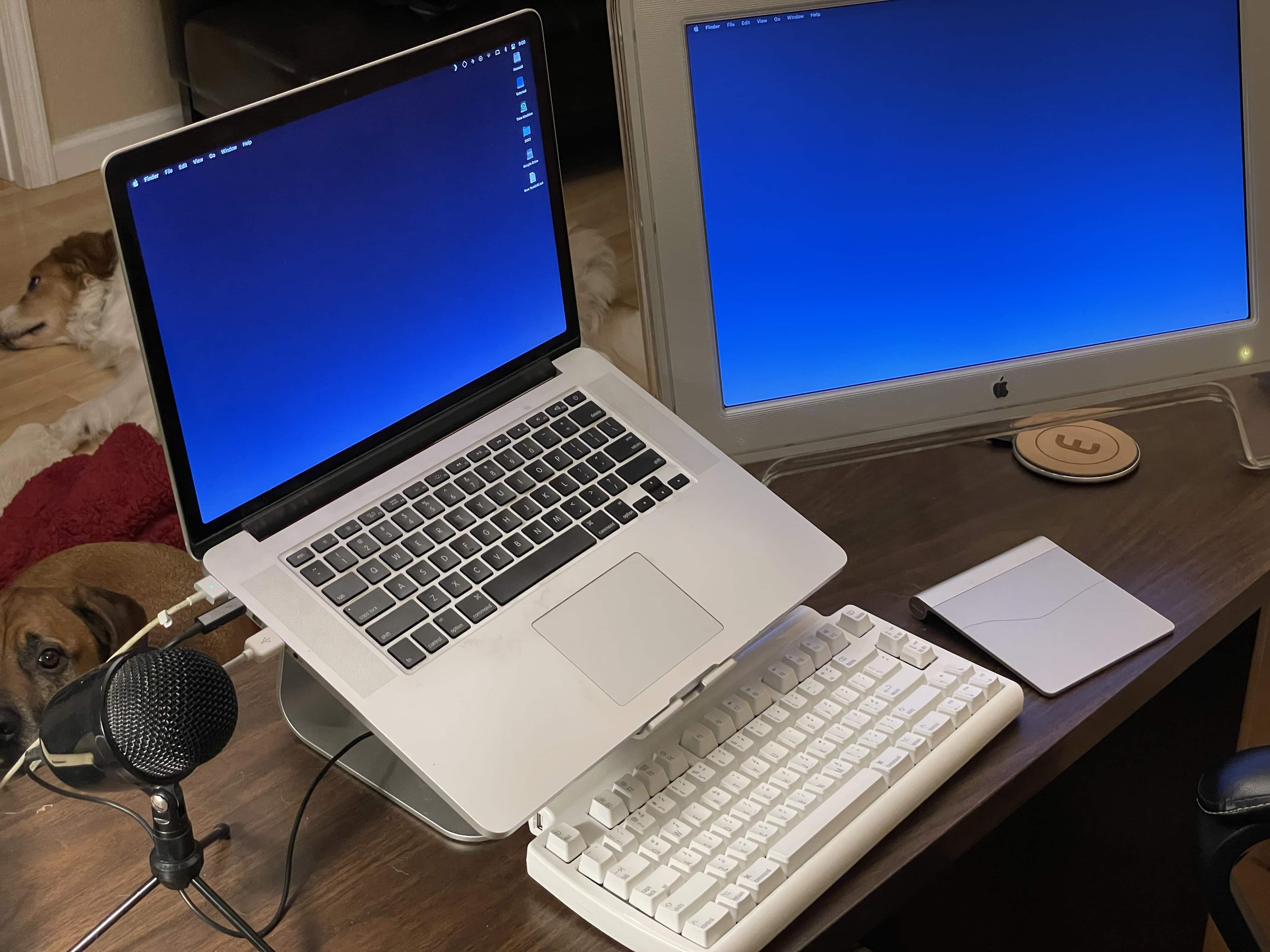
Photo: D. Griffin Jones/Cult of Mac
I decided to go back to my previous setup to see if I missed it or if I prefer using classic peripherals.
There’s no getting around the fact that the Magic Trackpad is far and away a better experience than a mouse without a scroll wheel or multitouch. I really love the Macintosh Mouse, but many indie apps and websites don’t play nice with scroll bars.
I definitely prefer the typing feel of an authentic Apple Extended Keyboard II over my Matias Mini Tactile Pro — a modern keyboard with a sensible layout and design, that doesn’t quite replicate the feel. The Matias keyboard has too much key travel, too firm of a key click and far too much noise. It’s still a good keyboard on its own merits, but it’s no AEK II.
The bottom line?
The TinkerBOY ADB to USB converter is a no-brainer if you’re a keyboard afficionado and you want to use the quintessential Apple keyboard. You plug it in, you’re asked to confirm the layout, and from then you’re using an ancient ADB keyboard like it was manufactured yesterday. It’s that simple.
The Macintosh peripheral converters are not for the faint of heart. This is an unapologetically nerdy product. It’ll get you a lot of street cred at WWDC and not many other places in the world.
There are people out there who spend hundreds of dollars on tiny keyboards with, like, twelve keys. I wonder what it’s like living in their bizarro world without any numbers or arrows.
Point is, there are weirder keyboards out there, but there does not exist a more hardcore Mac-assed keyboard and mouse than the Macintosh Keyboard and Mouse. The TinkerBOY converters are the best way to use them.
Pricing
Macintosh Keyboard to USB Converter: $35
Buy From: TinkerBOY
Macintosh Mouse to USB Converter: $35
Buy From: TinkerBOY
ADB to USB Converter: $39
Buy From: TinkerBOY
![Use classic Mac keyboards and mice with these adapters [Review] Extended Keyboard II and ADB Mouse II connected to my MacBook Pro and Cinema Display](https://www.cultofmac.com/wp-content/uploads/2022/10/ADB-Setup-1536x1152.jpg)

